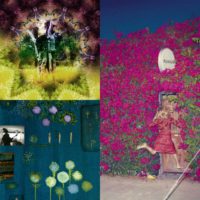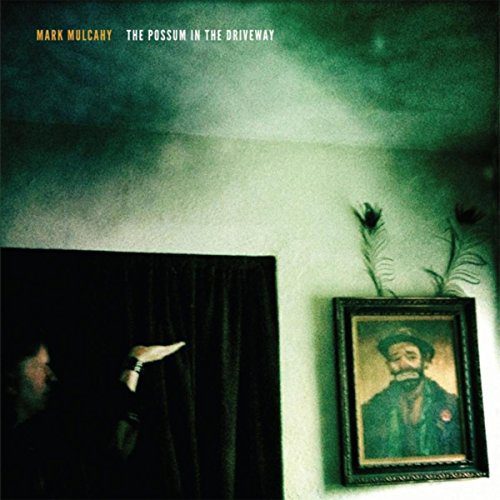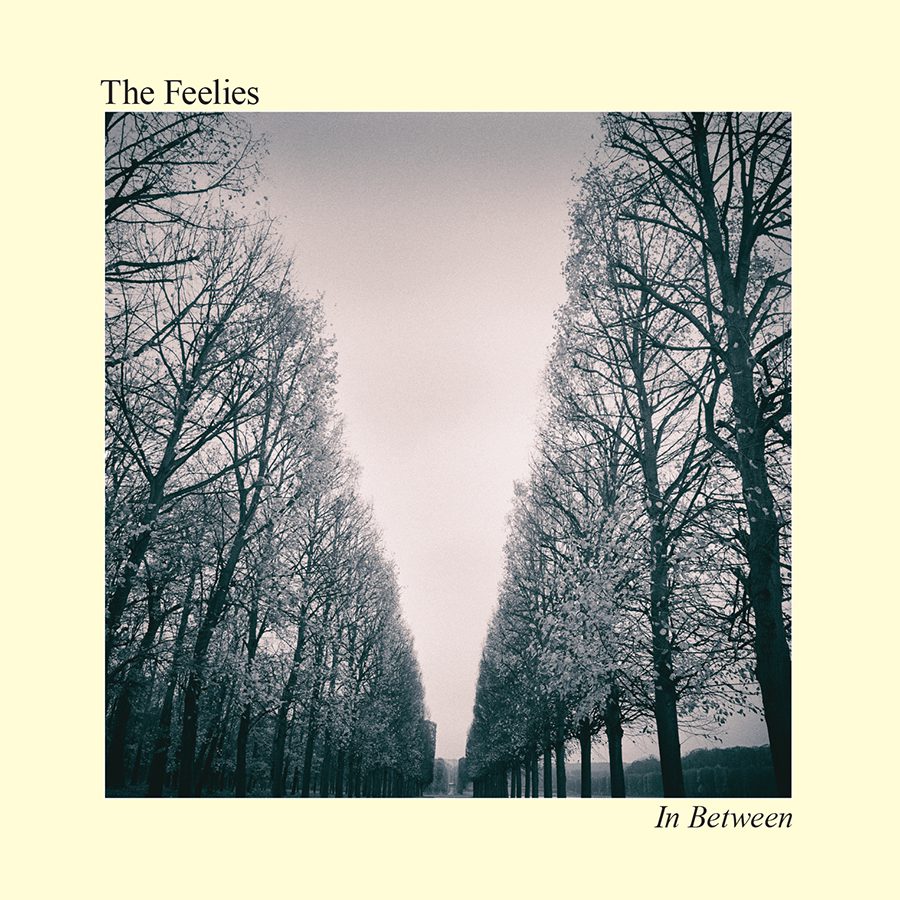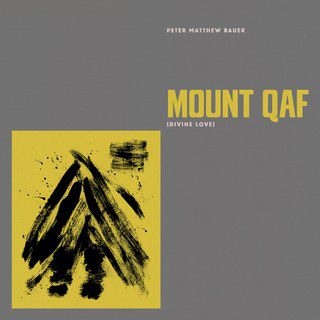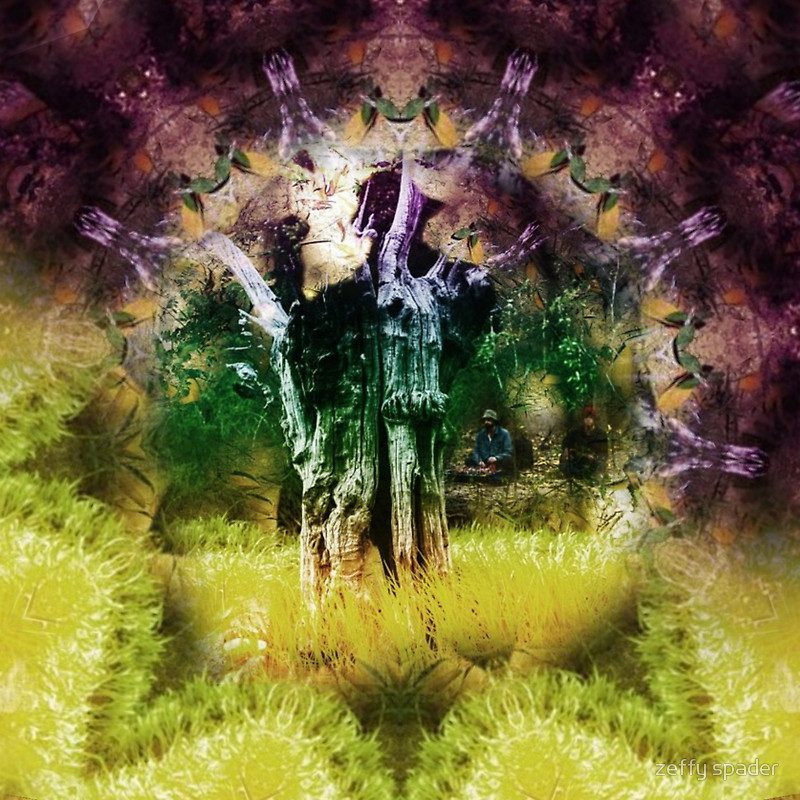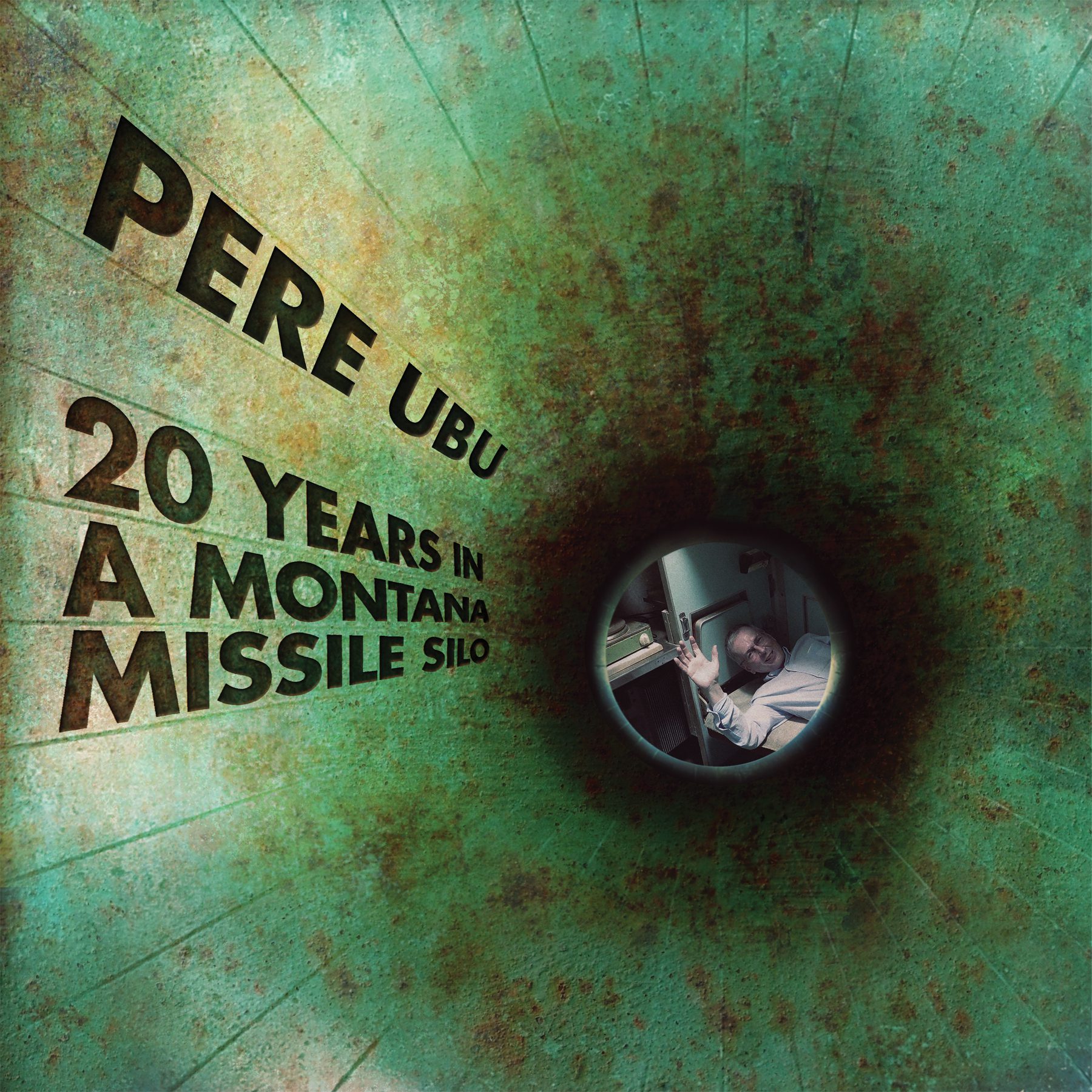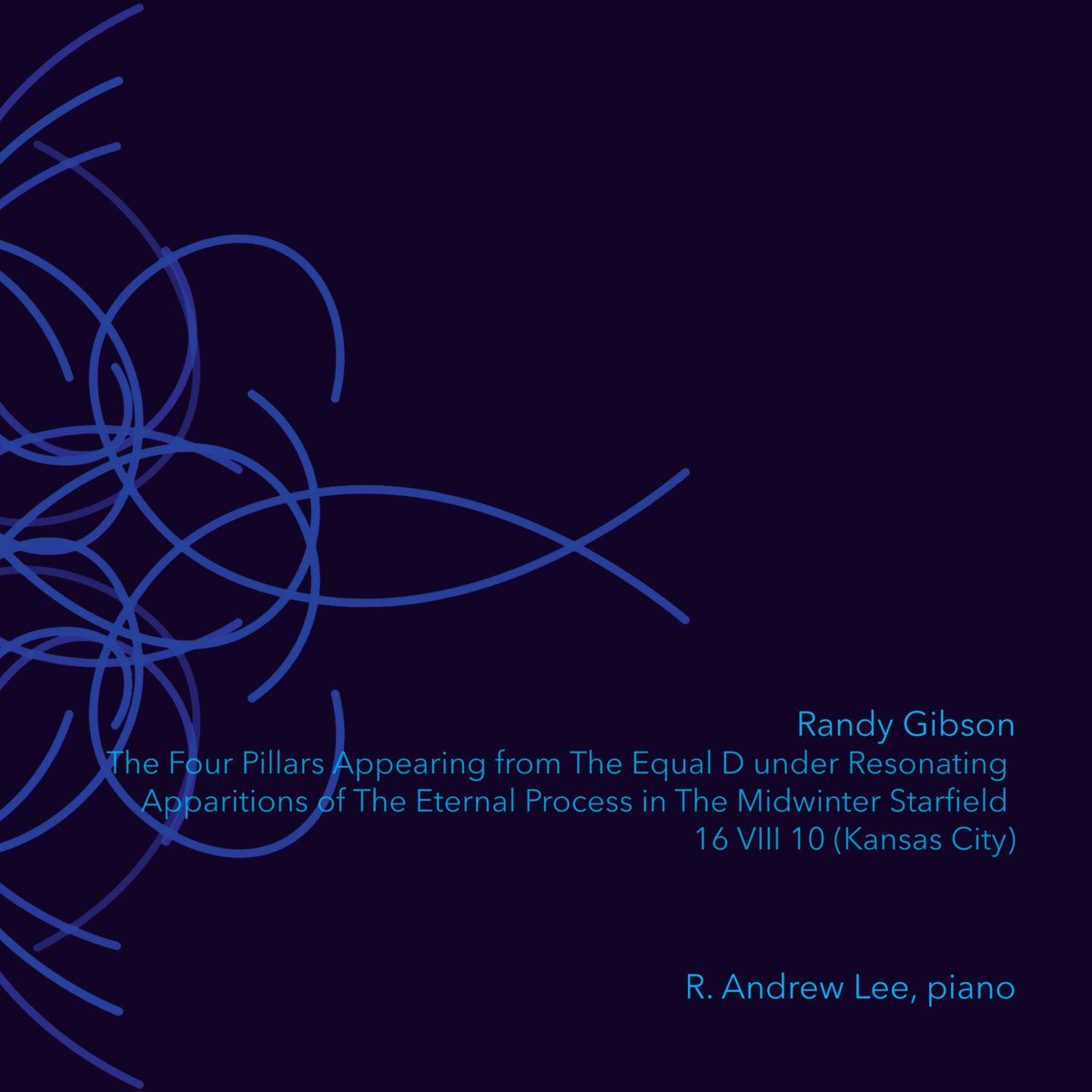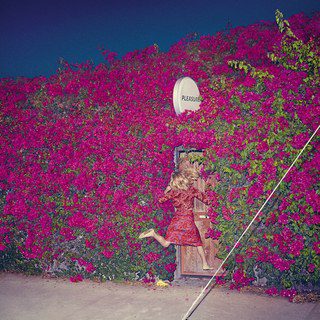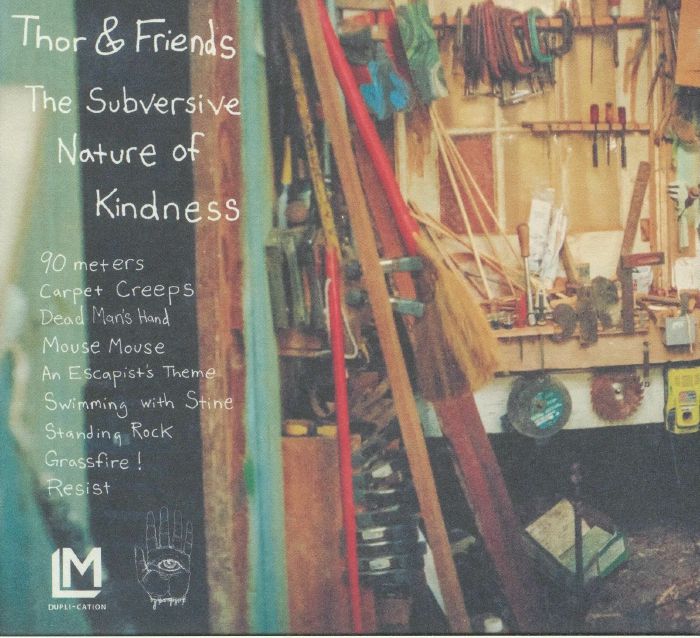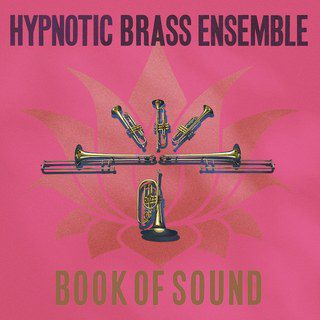As the dubious year 2017 ticked over into the just as dubious 2018, I did, as befits a music critic, spend some of my discretionary hours attempting to come up with the “year’s best” music, despite the fact that many of the albums from 2017 seemed to pass by me at high speed, never stopping for the kind of measured deliberation that I favor. The list-making enterprise, that is, came to naught. The list-making impulse seemed empty and ritualistic.
I therefore determined to make a list not of ten albums from 2017, but as many as I felt like including, and not exclusively of music from 2017, but just a bunch of albums that I have been enjoying recently, some of them things I have written about in my column, and many not. These are pieces of music that I think worthy of contemplation.
And: the title of this column is a slightly altered homage to the celebrated poem by W. H. Auden about the low and dishonest 1930s, which gave rise to WWII. By which I mean that these are albums to distract you from the horrors taking place daily in the theater of American political life. I hope you enjoy them.
***
1. Mark Mulcahy, The Possum in the Driveway (Mezzotint)
This is an incredibly brave and ingenious album, which I have in fact already written about, from one of the most interesting and maverick songwriters we have in the rock and roll world these days. I sort of can’t say enough about how great it is. The arrangements, for a guy who has often trafficked in a guitar, bass, and drums idiom, are fabulously ornate (horns play a big role), and the entirety of the album is a moving target. It feels, in a way, like a soul album, like something Otis Redding might have made in the studio, in that it is looking for arrangements that are painterly, but which keep the feeling alive. Both the first and last songs are particularly astounding, too, as in the old days of LPs. Because Mulcahy has been in the public eye a lot recently, not least with a touring and reunified Miracle Legion, it’s possible he’s competing with himself as far as the product goes. But to give an excellent record a pass simply because the songwriter is prolific is only to do yourself disservice. This is a major work by a truly heart-stopping adventurer of song. Make the investment.
2. The Feelies, In Between (Bar-None)
When I turned on a rock and roll album this year, just for delight, just for something to listen to, this was one of the albums I turned on the most. It is by far the better of the two albums that The Feelies, one of America’s most singular rock and roll bands, have made since their “reunion” (some eleven years ago, I think), and the first to extend their legacy, in part by doing exactly what they did before, but adding with it the agitation and uncertainty of middle age as a subject. This album sounds a little bit like one of their acknowledged masterpieces, The Good Earth, which is to say acoustic, unbuttoned, pastoral (it even has campfire sound effects), from the part of the Garden State that has actual gardens in it, but it also has, for example, the longest, loudest jam of the entire Feelies oeuvre, a wallop of feedback squawling that you would not expect from a bunch of people in their sixties. I guess if John Cale can still do it, The Feelies can do it. (Read my interview with the band’s drummers here.)
That said, In Between is ridiculously catchy, beautiful, with very strong melody writing, moody, uncomfortable lyrics, rhythmical tightness that you can only have when you’ve been playing together for more than three decades. This is what rock and roll is supposed to sound like. It moves you in your isles of Langerhans, in your lower depths. It drives you out of your inert and degraded state into ritual appreciation of drumming and the relationships that can develop between two guitar players. I never expect to feel these things anymore, and then, now and again, I feel these things, and am grateful to the verge of tears. These musicians have made a life out of these relationships now, and the documentation of these relationships in sound. While there are other bands who go on doing things for a long time, they often sound tired and self-parodistic (those British invasion bands, for example), whereas this band sounds agitated, and true, and moving.
3. Peter Matthew Bauer, Mount QAF (Divine Love)
Bauer continues to be the only member of The Walkmen that I am interested in. His first solo album (Liberation!), which came out in 2014, was also great, and had some similar features. For example, in the way that Father John Misty is basically the Pousette-Dart Band with grim, heartbroken, or cynical lyrics, Peter Matthew Bauer is basically Midwestern heartland punk (Replacements, e.g.) with very spiritual, almost New Age-y lyrics. Bauer’s wide-eyed way of appreciating mysticism is completely guileless, and thus totally admirable. But somehow he manages to shoehorn these concerns into songs that would otherwise be, perhaps, conventional love songs, and make them far deeper. Maybe the idiom is gospel-like in certain ways (and see the Alice Coltrane compilation below), thematically like gospel. But the sound is more punk and more rock and roll. He could be The Faces, the version of The Faces that made Ooh La La, where everyone was permitted to sing. Bauer’s voice has both limitations and great human warmth. This album was made with no real budget, as I understand it, and under difficult circumstances, and without the punctilious and bourgeois obsession with “period instruments” that defined The Walkmen later in their career, and which continues to define the work of certain other former members. And that’s why this album, in addition to its sheer content-oriented eccentricity, is so much better than those other albums. It’s a true rock and roll album, in an era when such things don’t exist. James Gang as interpreted by Flipper, or Squirrel Bait as interpreted by Deer Tick. Bauer continues to have an itch to create and to make fine songs with which to inquire into the layers of God manifesting above and around him, and I remain excited by his approach and concerns. I hope there are many more albums by him. Including the one that is just him singing about Dante over a shruti box.
4. Bill Orcutt by Bill Orcutt
I don’t like to give away my secret sources for things, lest the somewhat obscure musical artifacts I often really like, my discoveries, become public property, so let’s just say that I should have known about Bill Orcutt sooner. I was taken by his playing from the first moment I heard it. It reminds me a little bit of Richard Bishop of the Sun City Girls, but without the Indian inflections. Orcutt plays like a free jazz musician, but also like a punk, like Thurston Moore on bad acid, and he mixes in interpretations of standards with the originals. I spent time listening to his newest album as well as an earlier title, How the Thing Sings. I don’t know how I missed Orcutt’s punk rock period, but like many former punks of my vintage, he has replaced the overdriven electric guitar with advanced meditations on acoustic music and solo electric—like John Fahey perhaps. But that is to understate the way in which Orcutt is a genuine original. A truly insightful and powerful guitarist, who both illuminates with melody and devastates the guitar canon with his violent tendencies. I admire the whole project. Start with the recently released Bill Orcutt, which has, I must add, a really amazing photograph of Orcutt on the front, and which features a number of his mercurial renderings of well-known tunes.
5. Marvin Pontiac, The Asylum Years (Strange and Beautiful Music)
It’s probably well-known at this point that Marvin Pontiac is the alter ego of John Lurie. He released one earlier album under the Marvin rubric before the long silence that has been mainly owing to the artist’s long struggle with Lyme Disease. Marvin, in a way, bears all the marks of the hardship with which Lurie wrestles, because a preeminent symptom of the illness is that Lurie cannot play his horn. The early albums by John Lurie, all jazz albums (though the word seems inexact) attributed to The Lounge Lizards, prominently featured Lurie’s saxophone, and, indeed, he composed with this instrument uppermost in his palette. The Lounge Lizards were a mighty band, in all of their incarnations, but especially on the last two albums, the incomparable Voice of Chunk and Queen of All Ears. They sound like no other band on these albums. But Lurie will never be that John Lurie again (“things are not all right,” as Marvin intones on one song here), and like Don Van Vliet before him, he has mainly retired from music to making paintings. Really incredibly great, sometimes sloppy, enthusiastic (in the old sense of the word), funny, and powerfully moving paintings. He can paint even when he’s feeling awful, as he does somewhat regularly.
The appearance of a second Pontiac album, with all of this difficulty as a backdrop, is improbable indeed. Especially improbable is the idea that Lurie wrote and played all of these songs himself. There’s only John here. On acoustic guitar, harmonica, some banjo, miscellaneous percussion items, and vocals. There can’t be more than four or five tracks on any of the songs. It’s a completely minimalist album. The idiom lists in the direction of the blues, but also, as befits the Marvin Pontiac avatar, there is the long shadow of West African music. Lurie adores Ali Farka Touré, and you can here some of that West African groove to the guitar parts, simple and chimy.
As Lurie is a consummate musician, even in his reduced circumstances, the recordings are incredibly tight. In the pocket. The lyrics? Like Lurie’s paintings, the lyrics are often absurdist, both child-like and opaque. They are about sound and rhythm of the words. Occasionally, as in “things are not all right,” you can hear a bit of autobiography listing up toward the surface. But more often the lyrics are little bits of poetry and riffing, as you might expect of, say, Sun Ra, Art Ensemble of Chicago, or the like. The results are both highly virtuosic, otherworldly, and strangely desolate. This, in many ways, is the most unusual recording I heard this year. It’s a blues album, and not a blues album at all. John Lurie is like no one else. He is a lovable voice in the wilderness, asserting his presence in the face of hardship. This is what people sound like when they really need to make music.
6. Animal Collective, Meeting of the Waters (Domino)
As a passionately engaged listener who likes things that are new and display a kind of conviction, I would like to say that I uniformly like albums by Animal Collective. But I cannot say this. I like the idea of Animal Collective a great deal, and I like the looseness of the team that makes this music. I have followed the strands of its productions pretty closely over the years. But the fact of the matter is that I like some music by Animal Collective a lot more than certain other releases by the band. I am not among those who think that Merriweather Post Pavilion, e.g., is a perfect album. I want to like that album more than I do. Sometimes it just sounds like a sampler, you know what I mean? Sometimes that album sounds like a bunch of guys who have discovered how to use their sampler in the studio, and who had achieved a station in the world wherein they could use a really good studio and a really good producer to advance their study of the possibilities of their samplers and their mixing stations. Merriweather is a way of thinking about sound. It’s not really about songs, exactly.
I hate to say that Sung Tongs is more perfect, from my point of view (and Feels is really interesting, too, and that EP they made with Vashti Bunyan, Prospect Hummer), and if I were to boil down why I like better what I like better I would point to the use of the instrument known as the guitar, and the more guitar there is, the more Animal Collective appears to me to be a group of musicians than a group of laptops, which is not to resist specifically the laptops, but just to say that I still prefer the analogue, and the give and take of analogue as employed by people in a room. Meeting of the Waters, as you may know, was produced by a mere two members of Animal Collective, and mostly recorded in the Amazon, in a situation in which their usual bag of tricks were less accessible to them. It’s a conceptual project, and one which means to render an actual space, and to transmute that actual space into a speculative music, and it takes its time getting there, and to my mind, therefore, it’s the best Animal Collective recording in a while. It has a thirteen-minute track, “Blue Noses,” which requires Avey Tare to play his guitar, and this track feels more like the Red Krayola than it feels like Merriweather Post Pavilion, and to me that is most welcome. I can feel the implications of travel.
7. Pere Ubu, 20 Years in a Montana Missile Silo (Cherry Red)
A three-guitar edition of a band that used to pride itself on just the one guitar. Sort of a large-ensemble sound in every way, but still featuring David Thomas’s idiosyncratic but beautiful singing and his powerful, allusive, complex lyrics. The best album they have made in a long time. (If you want the punk rock version of Pere Ubu, go back and search out that Rocket from the Tombs “reunion” album called Barfly.)
8. Randy Gibson, The Four Pillars, performed by R. Andrew Lee (Irritable Hedgehog)
This album has been in constant rotation recently, sometimes for days at a time. In part I listened to it aggressively out of stubbornness. I didn’t want to be defeated by anything, especially anything difficult. You may have heard that Randy Gibson’s piece, whose title is a lot longer than shown above, has only one note. Or, perhaps, it’s more accurate to say that it consists only of octaves of one note, the note being D. The recording is in the area of three hours. That’s a lot of one note.
The sales handle here—the piece only has one note—is both provocation and intellectual curiosity. But it misrepresents what’s happening in this composition. Because The Four Pillars worships at the altar of La Monte Young, and especially La Monte Young’s rarely performed Well-Tuned Piano, as well as The Second Dream (which has an equally long title that I’m abbreviating here), both of these pieces being about overtones and manipulation of overtones in a space, Randy Gibson’s piece is not, strictly speaking about the note called D. It is about different manipulations of the clouds of overtones around D, depending on kinds of amplification and styles of playing, and so on. That is, The Four Pillars does in fact require only D to get to its musical expressions, but that’s like saying that a fresco requires paint.
Each section of The Four Pillars manipulates the percussive possibilities of playing the single note in a different way, and each manipulates the timbre and the field of the overtones differently. There are extremely fast sections, for example, that read as drones, and there are sections, for example, at the commencement of the piece, where the expanses of silence are only selectively interrupted with pianistic gestures. The performances of these pieces must be immensely demanding, perhaps even athletic at times. They are endurance performances. They are body art. And imagine what happens if you blow a note in a take when you’re playing the same note very quickly for fifty minutes, as Andrew Lee must do variously in this performance. What happens when you play a D# is you go back and start over again. The idea that minimalist expression is somehow easier was never less defensible than in gazing upon The Four Pillars. Andrew Lee, the performer, who is now building up a very impressive legacy of performances of minimalist piano pieces, has made this performance his own. One admires Randy Gibson for the conception, but one admires the performance even more.
I believe Lee, and Irritable Hedgehog, the label which issued this recording, are located in Kansas City, not a location that one assumes will be the locus of some of the most powerful new music anywhere in the United States. And yet. Part of the point of global culture these days is that it is iterated in local settings. You can listen to La Monte Young’s most obscure work on YouTube, from anywhere in the world, just about. Why shouldn’t Andrew Lee be making his rather astounding body of work in Kansas City? The significant point for this compendium of things I have liked recently is that this recording takes a very long time to be fully understood. It’s a demanding listen, but one I have come to admire a great deal.
9. Alice Coltrane, World Spirituality Classics, Vol. 1 (Luaka Bop)
Probably there was a whole underground mystery cult out there awaiting this album, once a rumor got about that there were recordings being made. In the late 1970s, Alice Coltrane did not command the respect and admiration she commands now. The years have made her idiosyncratic path that much more fascinating. The ashram music is particularly unusual, with its resistance, in some ways, to the organic, but that just makes it a more impressive body of work to wrestle with. It makes swooping synthesizer absolutely essential to its expression. Also the chanting has a real gospel feel to it. Is this cultural appropriation? The relocation of Hindu chants into the gospel vocabulary? I am, musically speaking, sometimes completely unperturbed by evidence of cultural appropriation. Rock and roll, for example, is mongrel music, a fusion of disparate materials. The same is true of Alice Coltrane’s chants. They are the evidence that God has arrived.
10. Feist, Pleasure (Interscope)
This is a good old-fashioned breakup album, as far as I can tell. That much is not in dispute. I really think Leslie Feist is great example of the songwriter these days. She is a primitivist, when you get down to it, and has all the credentials to attest thereto—she did damage to her vocal chords in a punk band, she sang with Peaches, and this is not to mention Broken Social Scene, in which she occasionally plays, though she is a primitivist who won a Grammy and sang on Sesame Street.
Her slightly primitivist guitar playing shines on Pleasure—her guitar playing that is sort of part Elvis Costello and part James “Blood” Ulmer. No matter how much you shine up the surface, her guitar is there, and it’s beautiful and human and fierce. The songs are great, too. All about trying to affirm self in the face of loss. There are beautiful harmonies, and bits of percussion turning up here and there. This is what Blue and Blood on the Tracks sound like in 2017. Like a Canadian punk, fully matured as a songwriter, singing alone with some percussion here and there. I have liked Feist in the past, but suddenly, on this album, she’s more than great; she’s heart-rending and totally adult, too. I keep coming back to this record and going a little bit deeper with it each time. It keeps revealing its secrets in slow motion.
11. Thor and Friends, The Subversive Nature of Kindness (Living Music)
Out of the ashes of the most recent iteration of Swans has come a lot of good, interesting music, even if Swans themselves amount to a great difficulty for the music fan concerned about and sympathetic to #metoo. I mean: the players in the recent iteration of Swans seem to represent something important; it’s like they lived through something, some shocking intensity, some cultic bludgeoning, some gnostic alternative world theory.
Thor and Friends (whose titular Thor is Thor Harris, former percussionist in Swans) are a prime example of the capacity of these players to surprise. The first album by Thor and Friends was mostly made with marimba, and was very, very quiet. The second album fills out the ensemble just a little bit. It’s melodically eerie and unique and doesn’t sound like a New Age album. It’s more like orthodox minimalism of the Steve Reich variety, but more melodically voluptuous.
The second album is called The Subversive Nature of Kindness, and this phrase operates as a sort of manifesto for the entire Thor and Friends project. The music does not forbid, repel, there is no Wagnerian assault—it invites you in by not challenging melody and tonality as mechanisms, and yet: it’s not as simple as all that. It’s not simply melodic. There are subversive, unsuspected, antique varieties of music happening here. It’s both really sophisticated and might have been played by people in caves. But it’s also very contemporary. And somehow feminine. I mean, perhaps, that its uppermost feelings, to me, are wonder, tenderness, and a certain stillness and melancholy. As such, Thor and Friends seems demonstrably to turn its back on the cultic bludgeoning of Swans, the cock rock qualities of Swans, not in a rhetorical way, not in a score-settling way, but as a way of being, a way of life.
12. Peter Holsapple, “Don’t Mention the War” (Hawthorne Curve)
I have been following Peter Holsapple’s solo material for some years, in that I heard a bunch of songs he premiered on a blog/podcast called Radio Free Song Club, which is on hiatus these days. I believe this new single dates to those songs (though its extremely sophisticated b-side “Cinderella Style” was new to me), but is newly recorded here in a sort of a Tonight’s the Night style, at least until the tuba in the chorus.
Like the greatest Holsapple songs (and there are a great many splendid songs by Peter Holsapple songs, dating back even before his stint in the dB’s in the eighties), “Don’t Mention the War” is narrative, even short-story-ish. The best comparable example of the scale of storytelling here would be “Amplifier,” the early track by the dB’s. But even that doesn’t quite get to the tragicomic desperation on this 45 rpm recording. When Holsapple tackles the titular hook, he does so with a long snare roll, and with the tuba part, and it’s hilarious and grim at the same time, in such a way that it’s easy to think that song is not at all about “the war,” or not a specific war, anyway, though it would be easy to cast it as a song about veterans coming back from Southeast Asia.
I think the song is a lot more allegorical than that, though. In part it’s about narration (“Sometimes I wish he’d just die,” the narrator says at one point about his uncle, recently back from combat, and it’s so cruel that the song sort of stops for a moment to take in the rashness of the comment), but it’s also about “the war” broadly construed. For example, it could be about Holsapple’s long life in the music business, and the war could be about coming back from the dB’s, and R.E.M., and Hootie and the Blowfish, and landing back at home, after “the dream” as it’s called in this song of musical ambition. I don’t think it’s that reductively allegorical, but the song is also not as simple as it seems; it condenses meanings and layers, and Holsapple’s perfectly preserved voice tackles it with all the yearning and wide-eyed sentiment that has characterized his best work, which, it’s worth mentioning, has much less frequently been pursued in the solo context. He’s an expert collaborator (go back and listen to the first of the Stamey and Holsapple albums if you want to hear a perfect collaboration, and the apotheosis of the so-called Hoboken sound). But “Don’t Mention the War” has all twists and turns and emotional complexities that Holsapple has so often had, and one can only lament that this song is just a single, and not part of some longer release, though perhaps it heralds one to come. Holsapple is one of the great contemporary songwriters, and we are lucky to have his work whenever he’s ready.
13. King Krule, The Ooz (True Panther Sounds)
There’s something truly menacing and awful about King Krule. In a way, it’s not music at all; it’s like the soundtrack to a horror movie made by people so polluted by downs that they can’t even play in tune—no wait, it’s not in tune on purpose! They are so dark they make those early Tricky albums sound really pop. They are sort of like trip hop if played during a large double-blind test on art produced by patients given large doses of first-generation antipsychotic medications. They are a representation of all the worst things about the present, but recast as music, sort of in the way Death Grips are so inflammatory as to be unlistenable, except that they are the best band on earth. King Krule is like that, as if some objectionable guy that your niece is dating—a gobbing, stammering, font of obscenity—decided to make a band. The melodies aren’t even melodies. There’s not a person who can properly be said to sing here. It sounds a little bit like dub, and a little bit like trip hop, and there’s even a bit of jazz hovering around the edges.
I don’t even want to live in a world that valorizes the King Krule model of music-making, as it doesn’t seem to have any humans involved, although I admit I watched them on television and there did seem to be humans there, and I even watched one of their videos, though I should have been doing something else. The badness of these songs is a symptom of weed and its new ubiquity. They don’t know how to end anything, so they just keep going. It’s worse than their first album, too. But not of this matters: that it’s not music for adults, that it’s dumb as hell, that it is just a series of sound effects pretending to be music. It’s kind of great. I would like to imagine a world in which Katy Perry and her producers have to listen to King Krule all day. I say all this even though I have rarely listened all the way through to this record in one sitting. I can only listen to a little bit at a time. I felt that way about The Flowers of Romance by Public Image Ltd., too, and now I think that’s a really great record. Archy Marshall looks like he is ten years old. One cannot help but worry.
14. Hypnotic Brass Ensemble, Book of Sound (Honest Jon’s Records)
I’ve followed this band since I ran into them once on the street in New York City (near Bryant Park). They are tight in a way that you just don’t find anywhere anymore, like they are all brothers. Oh wait, they are all brothers. And they do this, which is to say they play jazz, and they rap and play hip-hop, too. No more interesting band exists in hip-hop, excepting The Roots, but Hypnotic has better jazz bona fides than The Roots, deriving, through the lineage of their father, who played with Sun Ra and was instrumental in the Association for the Advancement of Creative Musicians in Chicago. They had to play, as the story goes, when they were very, very young. It was a way to have contact with their dad.
Anyway, Book of Sound to my ears is a jazz funeral for their late lamented father. Whereas before they often had a drummer, and mostly a drummer with a hip-hop or funk feel (that is, not a jazz drummer per se), this album goes without, and so feels much more melancholy and reflective than their earlier albums. There’s also a fair amount of singing, frequently group singing, on Book of Sound. There are themes that get repeated, leitmotifs, again and again. The tone of the trumpets, especially, is beautifully controlled and steady, nearly orchestral. The arrangements are complex, but not show-off-y. This album just has a lot of very unique flavors to it. This album is spooky, profound, beautifully composed, and meditative. Considering that eight brothers have to agree on all this stuff in order for it to happen, the unified field of the album is almost impossible to fathom. That’s when you know music of the highest order is taking place.
15. Paul de Jong, You Fucken Sucker (Temporary Residence Ltd.)
Recently, I went back and listened to all the early Nico solo albums, the trilogy of albums made by Nico and John Cale (The Marble Index, et al.). They are great albums, really uncompromising, and they represent something that very nearly never happens anymore, namely that music actually tracks in detail the gradients of human emotions that are frightening, or dark, or dangerous to the human subject. At one point (for example in the post-punk period), it was a revelation when musicians charted the darker human hues. We learned and felt and grew and we were less alone. Nowadays, grief and rage are stylized and not carefully discussed. The result of this is that there is a sort of a void where music and its purgative capabilities used to take root in productive ways.
Paul de Jong, whom I interviewed in this forum not long ago, on the occasion of the release of his first solo album, IF (before that he was one half of the excellent electro-acoustic band The Books), has attempted to stride honestly into this contested space on his second album, You Fucken Sucker. If the title looks like it promises significant provocation, then the title is wholly accurate. De Jong’s album, which, like its predecessor, conjoins really beautiful acoustic playing with wildly virtuosic computerized cutting and pasting and found vocal samples, in this case is utterly preoccupied with the damage that lovers, intimates, family members, can do to one another. The musical form of the album is eruptive—it goes from long meditative passages (“Wavehoven,” e.g., which I would be happy to listen to all day if it were on a loop) to blasts of found-vocal outrage (“Fuck You! Fuck You!” on “Doomed”) with little transitional preparation. There’s none of the machined consistency you might experience elsewhere, on some other contemporary recording.
Indeed, ideas of security, scale, proportion, are precisely what de Jong is ruling out. The form of the album—prickly, skeletal, assaultive, deeply demoralized, by turns—is a very exacting representation of the post-traumatic space. And that’s all before we get to the last track, wherein a woman’s voice rings out, captured from some obscure source, from a film, from a cassette purchased at a garage sale, recorded at home, we will probably never know, shove the whole thing right up your ass, fuck you, fuck you, fuck you, she rages against some embattled intimate it seems, in a total conflagration of the domestic. I can think of only a few recordings that are as wantonly devastating. (Try listening to Lisa Germano’s Geek the Girl again, if you haven’t heard it lately.)
What’s the correct reaction to this? The only supposition can be that de Jong has been living through something recently (for which we had no real preparation on the last record), look at me, look at me, look at me, shove this whole thing up your ass! And the only thing we can feel about this something, aside from shock and terror, is extremes of sympathy. Well, and maybe some admiration, too. All the love song pabulum we are inundated with, that is our every teenybopper moment on the radio, or worse, all the infantile sex song onanism that we are fed every day even by singers who might know better, does not prepare us for this, the true sound of people who were in love, or who once loved one another parting, and out to cause the most damage possible on the way. That’s the sound of this record, and it’s brave and true.
Honorable Mention: “Lucky Stars” by The Motels (Sunset Blvd. Records)
I have tremendous love and admiration for Martha Davis, the songwriter and singer in the band called The Motels. I have written elsewhere about my long and profound relationship with Davis’s early song “Total Control.” But that was forty-five years ago, or so, and “Lucky Stars” is made here and now. All the tropes of the eighties—a certain kind of digital synthesis, a certain drum sound—are preserved in “Lucky Stars,” and that’s hard to pull off. And yet I would expect nothing less. Where the B-52s try to ape the LCD Soundsystem songbook to move into the future, and where the Go-Gos get stuck in the oldies circuit, Martha Davis is still trying to use the popular song to express complex and paradoxical truths about her gallery of yearning and dispossessed lovers. Her voice is unaccountably perfect, exactly as it was, with the same warble, and slight jazz/soul liquidity to it. The decades roll away, and there’s Davis, as before, with her remarkable compositional smarts, the Carole King of the eighties, churning out one excellent chorus after another. I happen to know that Martha Davis has not had the easiest life recently, with one harrowing tragedy following another, with the result that continuing to write songs and tour (which she does every summer) is an act of self-preservation in the face of her hardship and grief. The Last Few Beautiful Days, the album from which “Lucky Stars” comes, is now available, and it’s a stunner. We are lucky to have Martha Davis, and this has been the case for the four decades of her production. Here she is again trying to wave off the horrors of the present.
Honorable Mention: Shore Leave by Yung Wu (Bar-None)
I could easily have mentioned this recording above, as it is by a Feelies splinter group, one of many favored by the band during the layoff between their first and second albums. Like the epochal and unimpeachably magnificent second Feelies album The Good Earth, this record, now rereleased by Bar-None, hews toward the double acoustic guitar format, with tasteful soloing, though in this case with Dave Weckerman on lead vocals, and including a very illuminating multi-course meal of covers, ones that would not be out of place in any Feelies live show. Neil Young turns up, as does Brian Eno, and there are a few originals as well. It’s perhaps inexplicable that it took so long for this album to make its reappearance when so many other Haledon-related artifacts have risen up from obscurity recently, but it’s not worth carping at how a problem is remediated. Weckerman’s punk rock aspect, his blunt phrasing and impressionistic relationship to pitch, are part of what’s most excellent and charming about Shore Leave. It captures the Feelies at a great moment, when they were solidifying the lineup that persists to this day, but with one eye on their origins in punk and the post-psychedelic music of New York punk scene in the late seventies. I coveted my Coyote records cassette of this album, in the eighties, purchased at Hoboken’s late lamented Pier Platters, but I can now proceed along in my diminished remaining years without worrying about having to maintain a cassette player.
